 W
WThe term baroque horse describes a group of horse breeds, usually descended from and retaining the distinctive characteristics of a particular type of horse that rose to prominence in Europe during the Baroque era, after significant development throughout the Middle Ages. It describes the type of agile but strong-bodied descendants of horses in the Middle Ages such as the destrier. Specific ancestors of this type include the Neapolitan horse, and the Iberian horse of Barb ancestry known in the Middle Ages as the Spanish Jennet. They are characterized by powerful hindquarters, a muscular, arched neck, a straight or slightly convex profile, and usually a full, thick mane and tail. These horses are particularly well suited for the haute ecole discipline of classical dressage.
 W
WThis page is a list of horse and pony breeds, and also includes terms for types of horse that are not necessarily standardized breeds but are often labeled as breeds. While there is no scientifically accepted definition of the term "breed", a breed is generally defined as having distinct true-breeding characteristics over a number of generations. Its members may be called "purebred". In most cases, bloodlines of horse breeds are recorded with a breed registry. The concept is somewhat flexible in horses, as open stud books are created for developing horse breeds that are not yet fully true-breeding.
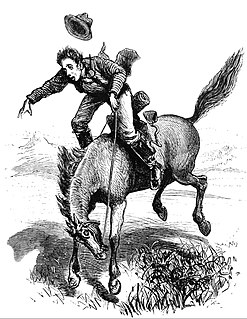 W
WCayuse is an archaic term used in the American West, originally referring to a small landrace horse, often noted for unruly temperament. The name came from the horses of the Cayuse people of the Pacific Northwest. The term came to be used in a derogatory fashion to refer to any small, low-quality horse, particularly if owned by indigenous people or a feral horse.
 W
WA cob is traditionally a small horse, usually of a stout build, with strong bones, large joints, and steady disposition; it is a body type of horse rather than a specific breed. Historically, in the United Kingdom and, to a lesser extent, the eastern United States, a 'cob' may be a common horse used for everyday riding but in the past was used for driving carts.
 W
WColonial Spanish horse is a term popularized by D. Philip Sponenberg for a group of horse breed and feral populations descended from the original Iberian horse stock brought from Spain to the Americas. The ancestral type from which these horses descend was a product of the horse populations that blended between the Iberian horse and the North African Barb. The term encompasses many strains or breeds now found primarily in North America. The status of the Colonial Spanish horse is considered threatened overall with seven individual strains specifically identified. The horses are registered by several entities.
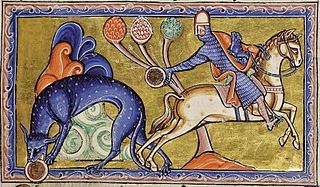 W
WA courser is a swift and strong horse, frequently used during the Middle Ages as a warhorse. It was ridden by knights and men-at-arms.
 W
WThe destrier is the best-known war horse of the medieval era. It carried knights in battles, tournaments, and jousts. It was described by contemporary sources as the Great Horse, due to its significance.
 W
WA draft horse (US), draught horse (UK) or dray horse, less often called a carthorse, work horse or heavy horse, is a large horse bred to be a working animal doing hard tasks such as plowing and other farm labor. There are a number of breeds, with varying characteristics, but all share common traits of strength, patience, and a docile temperament which made them indispensable to generations of pre-industrial farmers.
 W
WA feral horse is a free-roaming horse of domesticated stock. As such, a feral horse is not a wild animal in the sense of an animal without domesticated ancestors. However, some populations of feral horses are managed as wildlife, and these horses often are popularly called "wild" horses. Feral horses are descended from domestic horses that strayed, escaped, or were deliberately released into the wild and remained to survive and reproduce there. Away from humans, over time, these animals' patterns of behavior revert to behavior more closely resembling that of wild horses. Some horses that live in a feral state but may be occasionally handled or managed by humans, particularly if privately owned, are referred to as "semi-feral".
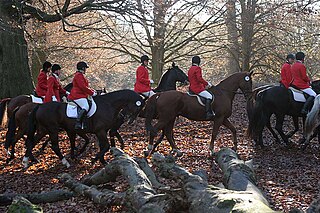 W
WA field hunter, or a fox hunter, is a type of horse used in the hunt field for fox hunting and stag hunting.
 W
WA filly is a female horse that is too young to be called a mare. There are two specific definitions in use:In most cases, a filly is a female horse under four years old. In some nations, such as the United Kingdom and the United States, the world of horse racing sets the cutoff age for fillies as five.
 W
WA foal is an equine up to one year old; this term is used mainly for horses. More specific terms are colt for a male foal and filly for a female foal, and are used until the horse is three or four. When the foal is nursing from its great (mother), it may also be called a "suckling". After it has been weaned from its dam, it may be called a "weanling". When a mare is pregnant, she is said to be "in foal". When the mare gives birth, she is "foaling", and the impending birth is usually stated as "to foal". A newborn horse is "foaled".
 W
WA gelding is a castrated horse or other equine, such as a donkey or a mule. Castration, as well as the elimination of hormonally driven behavior associated with a stallion, allows a male horse to be calmer and better-behaved, making the animal quieter, gentler and potentially more suitable as an everyday working animal. The gerund and participle "gelding" and the infinitive "to geld" refer to the castration procedure itself.
 W
WA grade horse is a horse whose parentage is unknown, unidentifiable, or of significantly mixed breeding. This differs from purebred animals of known bloodlines and also differs from deliberately crossbred animals that are produced with an intent of either creating a new breed of horse or an animal with characteristics that deliberately combine the strengths of two different breeds. Many grade horses are the result of unintentional or accidental breedings, though in some cases, they are the result of a planned breeding of a stallion and a mare, but animals who themselves are of uncertain bloodlines.
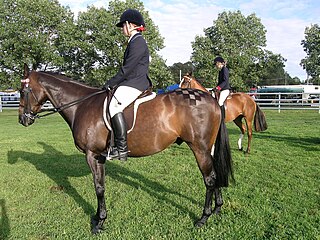 W
WHack within the activity of equestrianism commonly refers to one of two things: as a verb, it describes the act of pleasure riding for light exercise, and as a breed (Hackney/hack), it is a type of horse used for riding and pulling carriages. The term is sometimes used to describe certain types of exhibition or horse show classes where quality and good manners of the horse are particularly important.
 W
WThe heavy warmbloods are a group of horse breeds primarily from continental Europe. The title includes the Ostfriesen and Alt-Oldenburger ("Old-Oldenburger"), Groningen, and similar horses from Silesia, Saxony-Thuringia, and Bavaria. Breeds like the Hungarian Nonius, Kladruber, and Cleveland Bay are also often classed as "heavy warmbloods." They are the ancestors of the modern warmbloods, and are typically bred by preservation groups to fit the pre-World War I model of the all-purpose utility horse. Unlike the registries of the sport horses that followed them, many heavy warmblood registries maintain closed or partly closed studbooks. However, external evaluation and performance testing of the breeding stock is still a key element in these registries. Many of the heavy warmbloods are selected primarily for family-friendly temperaments.
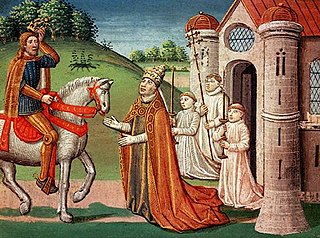 W
WHorses in the Middle Ages differed in size, build and breed from the modern horse, and were, on average, smaller. They were also more central to society than their modern counterparts, being essential for war, agriculture, and transport.
 W
WThe Iberian horse is a title given to a number of horse breeds native to the Iberian peninsula. At present, no fewer than 18 horse breeds are officially recognized
 W
WThe Indian Half-bred is a horse type from the subcontinent of India. It is a cross-breed between Thoroughbred stallions and local and imported mares of various types. It is raised mainly by the Indian Army as a cavalry mount; it is also used by the Indian Police Service, as a polo pony, and for recreational and competitive riding.
 W
WA jennet or Spanish jennet was a small Spanish horse. It was noted for a smooth naturally ambling gait, compact and well-muscled build, and a good disposition. The jennet was an ideal light riding horse, and as such spread across Europe and provided some of the foundation bloodstock for several horse breeds in the Americas.
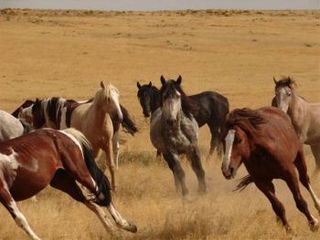 W
WHerd Management Areas (HMA) are lands under the supervision of the United States Bureau of Land Management (BLM) that are managed for the primary but not exclusive benefit of free-roaming "wild" horses and burros. While these animals are technically feral equines descended from foundation stock that was originally domesticated, the phrase "wild horse" has a specific meaning in United States law, giving special legal status to the descendants of equines that were "unmarked and unclaimed" on public lands at the time the Wild and Free-Roaming Horses and Burros Act of 1971 (WFRHBA) was passed. Horses that escaped or strayed from other places onto public lands after December 15, 1971 did not automatically become protected "wild horses". In 1971, free-roaming horses and burros were found on 53,800,000 acres (21,800,000 ha) of federal land. Today there are approximately 270 HMAs across 10 states, comprising 31,600,000 acres (12,800,000 ha). Additional herd areas (HAs) had free-roaming horse or burro populations at the time the Act was passed and some still have horse or burro populations today, but unlike the HMAs, they are not managed for the benefit of equines. In addition, some free-roaming equines protected under the WFRHBA are found on lands managed by the National Park Service (NPS), and United States Forest Service (USFS), where they are called wild horse territories (WHT). The BLM sometimes manages equine populations for other federal agencies, the USFS manages some of its own WHTs, and sometimes the agencies administer these areas jointly.
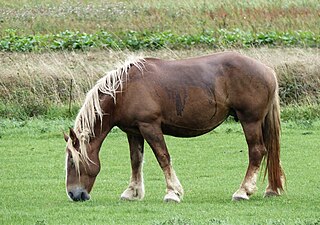 W
WA mare is an adult female horse or other equine.
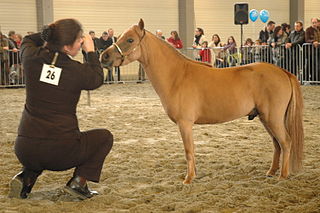 W
WMiniature horses are horses defined by their small height. They can be found in many nations, particularly in Europe and the Americas, and are the result of centuries of selective breeding. Depending on the particular breed registry involved, the height of these horses is usually less than 34–38 inches (86–97 cm) as measured at the last hairs of the mane, which are found at the withers. While miniature horses fit a height-based definition to be considered a very small pony, many retain horse characteristics and are considered "horses" by their respective registries. They have various colors and coat patterns.
 W
WMountain and moorland ponies form a group of several breeds of ponies and small horses native to the British Isles. Many of these breeds are derived from semiferal ponies kept on moorland or heathland, and some of them still live in this way, as well as being kept as fully domesticated horses for riding, driving, and other draught work, or for horse showing.
 W
WThe term oriental horse refers to the ancient breeds of horses developed in the Middle East, such as the Arabian, Akhal-Teke, Barb, and the now-extinct Turkoman horse. They tend to be thin-skinned, long-legged, slim in build and more physically refined than other types, but with great endurance. Oriental horses, sometimes referred to as "hot-blooded" breeds, have a level of intelligence that allows them to be athletic, versatile, and learn quickly. They are bred for agility and speed and are generally considered spirited and bold.
 W
WA packhorse, pack horse, or sumpter refers to a horse, mule, donkey, or pony used to carry goods on its back, usually in sidebags or panniers. Typically packhorses are used to cross difficult terrain, where the absence of roads prevents the use of wheeled vehicles. Use of packhorses dates from the neolithic period to the present day. Today, westernized nations primarily use packhorses for recreational pursuits, but they are still an important part of everyday transportation of goods throughout much of the third world and have some military uses in rugged regions.
 W
WA palfrey is a type of horse that was highly valued as a riding horse in the Middle Ages. It was a lighter-weight horse, usually a smooth gaited one that could amble, suitable for riding over long distances. Palfreys were not a specific breed as horse breeds are understood today.
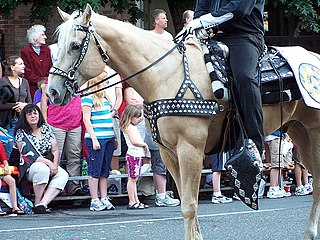 W
WHorses are ridden and driven in actual parades in many different ways. However, a Parade horse refers specifically to a type of horse attired in elaborate, specialized equipment that is more often seen today in specialized competitions and exhibitions than in parades.
 W
WA part-Arabian, partbred Arabian or, less precisely, half-Arabian, is a horse with documented amounts of Arabian horse breeding but not a purebred. Because the Arabian is deemed to be a breed of purebred horse dating back many centuries, the modern breed registries recognized by the World Arabian Horse Organization generally have tightly closed stud books which exclude a horse from registration if it is found to contain any outside blood. However, Arabian breeding has also been used for centuries to add useful traits to countless other horse breeds. In the modern era, crossbreeding has been popular to combine the best traits of two different breeds, such as color, size, or ability to specialize in a particular equestrian discipline.
 W
WA polo pony is the term used for a horse used in the game of polo. They may be of any breed or combination of breeds, though many have a significant amount of Thoroughbred breeding. They are called "ponies", but that is a reference to their agile type rather than their size; almost all are horse-sized. They require considerable training and ongoing conditioning, and because each rider requires several horses in a single match, this can be a considerable expense. For competition, polo ponies have their manes roached and tails braided so that there is no danger of being tangled in the mallet.
 W
WA pony is a small horse. Depending on the context, a pony may be a horse that is under an approximate or exact height at the withers or a small horse with a specific conformation and temperament. A pony is typically under the height of 14.2 hands high. There are many different breeds. Compared to other horses, ponies often exhibit thick manes, tails and overall coat, as well as proportionally shorter legs, wider barrels, heavier bone, thicker necks, and shorter heads with broader foreheads. The word pony derives from the old French poulenet, meaning foal, a young, immature horse, but this is not the modern meaning; unlike a horse foal, a pony remains small when fully grown. On occasion, people who are unfamiliar with horses may confuse an adult pony with a foal.
 W
WA ridgling, or rig, is a cryptorchid; a male animal with one or both testicles undescended, usually describing a ram, bull, or male horse, but cryptorchidism also can be an issue in dogs and cats. Because the heat inside the body is too high for sperm to survive, an undescended testicle is non-functional. The condition is most often discussed in the horse world, as the health behavioral issues surrounding adult males with the condition are of concern to owners and handlers of such animals.
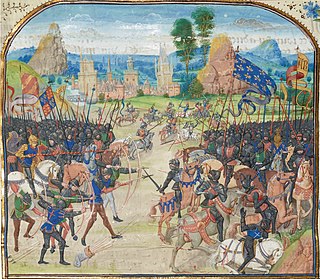 W
WThe term rouncey was used during the Middle Ages to refer to an ordinary, all-purpose horse. They were used for riding, but could also be trained for war. It was not unknown for them to be used as pack horses. The horse, which was also referred to as runcinus, is believed to be a harrowing animal on account of its proportions found in the demesne stock listing before it became an exclusively riding animal.
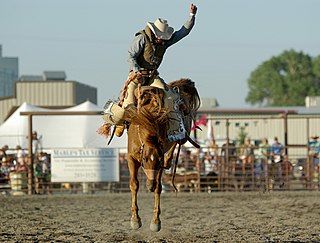 W
WA bucking horse is any breed or gender of horse with a propensity to buck. They have been, and still are, referred to by various names, including bronco, broncho, and roughstock.
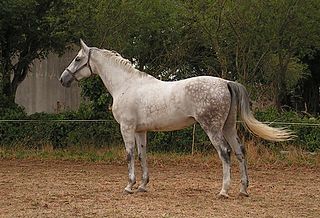 W
WA sport horse or sporthorse is a type of horse, rather than any particular breed. The term is usually applied to horses bred for the traditional Olympic equestrian sporting events of dressage, eventing, show jumping, and combined driving, but the precise definition varies. In the United States, horses used in hunt seat and show hunter competition are often classed as sport horses, whereas the British show hunter is classified as a "show horse."
 W
WA stallion is a male horse that has not been gelded (castrated). Stallions follow the conformation and phenotype of their breed, but within that standard, the presence of hormones such as testosterone may give stallions a thicker, "cresty" neck, as well as a somewhat more muscular physique as compared to female horses, known as mares, and castrated males, called geldings.
 W
WA stock horse is a horse of a type that is well suited for working with livestock, particularly cattle. The related cow pony or cow horse is a historic phrase, still used colloquially today, referring to a particularly small agile cattle-herding horse; the term dates to 1874. The word "pony" in this context has little to do with the animal's size, though the traditional cow pony could be as small as 700 to 900 pounds and less than 14 hands high.
 W
WWarmbloods are a group of middle-weight horse types and breeds primarily originating in Europe and registered with organizations that are characterized by open studbook policy, studbook selection, and the aim of breeding for equestrian sport. The term distinguishes these horses from both heavy draft horses and refined light saddle horses such as the Thoroughbred, Arabian, and Akhal-Teke. Although modern warmbloods are descended from heavier agricultural types systematically upgraded by hotblood influence, the term does not imply that warmbloods are direct crosses of "cold" and "hot".
 W
WA weanling is an animal that has just been weaned. The term is usually used to refer to a type of young horse, a foal that has been weaned, usually between six months and a year. Once it is a year old, the horse is referred to as a yearling.
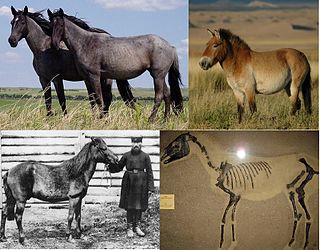 W
WThe wild horse is a species of the genus Equus, which includes as subspecies the modern domesticated horse as well as the undomesticated tarpan, and the endangered Przewalski's horse.
 W
WThe term Windsor Grey is given to grey horses used by the Royalty of the United Kingdom to draw carriages and coaches in various ceremonial processions and, since 1986, when The Queen is Trooping the Colour. They are stabled in the Royal Mews. Some have also represented the crown in various carriage combined driving competitions, at times driven by Prince Philip, Duke of Edinburgh.
 W
WA yearling is a young horse either male or female that is between one and two years old. Yearlings are comparable in development to a very early adolescent and are not fully mature physically. While they may be in the earliest stages of sexual maturity, they are considered too young to be breeding stock.